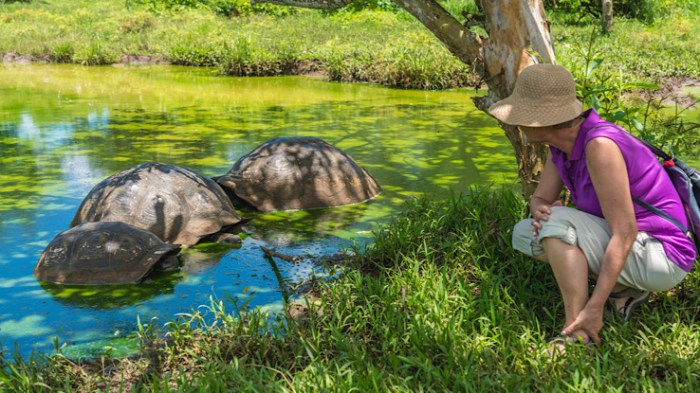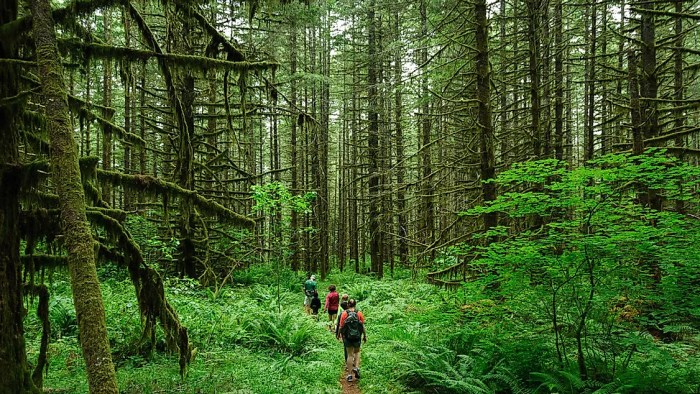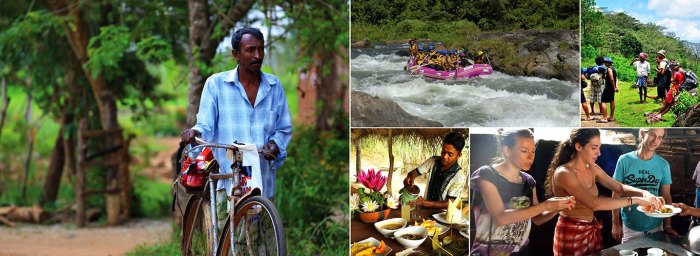Ecotourism Sustainable Travel
Ecotourism, a burgeoning travel sector, prioritizes environmental preservation and cultural understanding. It’s more than just a vacation; it’s an opportunity to connect with nature and local communities responsibly. This exploration delves into the multifaceted world of ecotourism, from its core principles to its prospects.
This guide examines the key aspects of ecotourism, including its definition, diverse destinations, potential impacts, and sustainable practices. It also discusses the challenges and opportunities that lie ahead for this crucial form of travel.
Defining Ecotourism

Source: cloudfront.net
Ecotourism is a rapidly growing sector of the travel industry, offering a unique opportunity for travellers to experience natural environments while contributing to their conservation and the well-being of local communities. It’s more than just a vacation; it’s a conscious choice to engage with destinations in a sustainable and responsible manner.
Ecotourism distinguishes itself from traditional mass tourism by prioritizing environmental protection, cultural preservation, and community empowerment. It emphasizes responsible travel practices and fosters a deeper connection between visitors and the places they visit, rather than a superficial experience. This focus on sustainability and interaction forms the bedrock of its philosophy.
Key Characteristics of Ecotourism
Ecotourism is characterized by a commitment to minimizing environmental impact and maximizing positive contributions to the local community. It is designed to be an educational experience, fostering an appreciation for biodiversity and cultural heritage. This is achieved through responsible travel practices, emphasizing low-impact activities and supporting local businesses and communities.
Core Principles and Values, Ecotourism
Ecotourism is built on a foundation of fundamental principles. These principles include:
- Environmental Sustainability: Ecotourism prioritizes the protection of natural resources and ecosystems. Activities are designed to minimize waste, pollution, and disturbance to fragile environments. This includes reducing carbon footprint, conserving water, and promoting responsible wildlife viewing practices.
- Cultural Sensitivity: Ecotourism respects and values the local culture and traditions. It encourages interaction with local communities, promoting understanding and appreciation, while respecting their customs and beliefs. This involves engaging with local guides, participating in cultural events, and supporting local crafts.
- Community Involvement: Ecotourism empowers local communities by providing economic opportunities and promoting their well-being. It ensures that the benefits of tourism are shared equitably, supporting local businesses, employing local guides, and reinvesting in local infrastructure.
Examples of Ecotourism Activities
Numerous activities embody the principles of ecotourism. Examples include:
- Wildlife viewing tours: These tours are designed to minimize disturbance to wildlife and often involve local guides knowledgeable about the region’s biodiversity. The tours prioritize responsible wildlife viewing, ensuring no harm to the animals or their habitats. For example, birdwatching tours in a protected rainforest or observing whales in their natural habitat.
- Community-based tourism projects: These projects directly involve local communities in the tourism process, offering them employment opportunities and enabling them to share their cultural heritage. For instance, a stay at a homestay in a rural village, learning traditional crafts from local artisans, or participating in local festivals.
- Sustainable trekking and hiking: These activities are designed to minimize impact on the environment and promote responsible tourism. They often involve hiking trails designed to avoid sensitive ecosystems and promote conservation efforts. This could involve trekking in the Himalayas, with local guides who promote conservation efforts, or hiking on trails that support sustainable practices.
Benefits of Ecotourism
Ecotourism offers significant advantages for both local communities and the environment. It provides a pathway for economic development for local communities through job creation and income generation. This is often seen in developing nations where ecotourism can provide much-needed income streams. Simultaneously, it fosters environmental conservation, motivating communities to protect natural resources. For example, a community protecting a rainforest to maintain ecotourism revenue, rather than exploiting the resources for other purposes.
Comparison of Ecotourism and Mass Tourism
| Feature | Ecotourism | Mass Tourism | Key Difference |
|---|---|---|---|
| Environmental Impact | Minimizes impact; promotes conservation | Often high impact; can lead to pollution and resource depletion | Ecotourism prioritizes sustainability, mass tourism does not. |
| Community Involvement | Empowers local communities; shares benefits | Limited community involvement; benefits often accrue to large corporations | Ecotourism benefits local communities, mbut ass tourism does not. |
| Visitor Experience | Focuses on immersion and education | Focuses on entertainment and leisure activities | Ecotourism provides an educational experience, mass tourism provides a more superficial one. |
| Economic Impact | Supports local businesses and employment | Often supports large corporations and international chains | Ecotourism supports local economies, while mass tourism benefits global corporations. |
Ecotourism Destinations
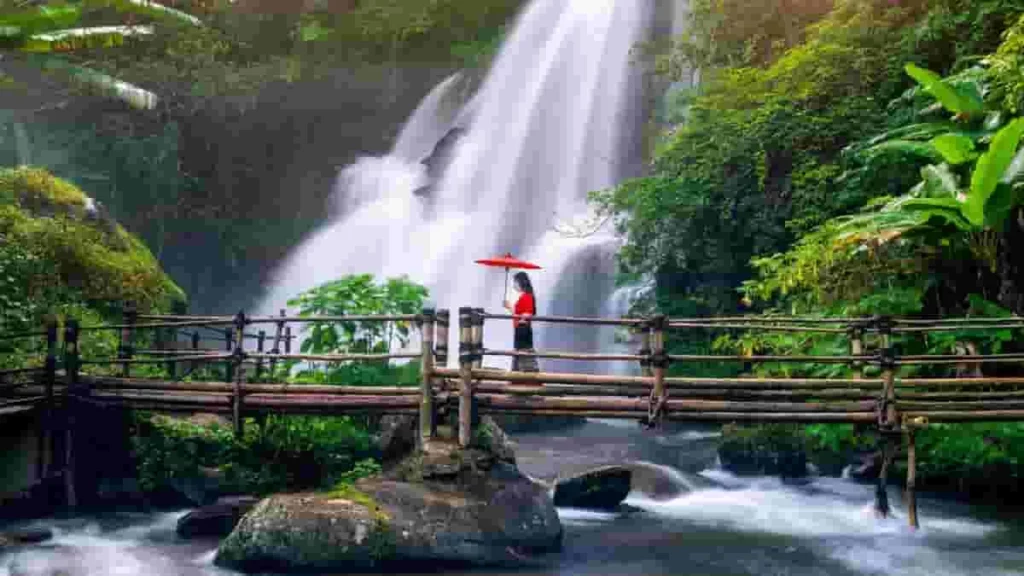
Ecotourism, a rapidly growing sector of the travel industry, focuses on responsible travel to natural areas, contributing to conservation efforts and supporting local communities. This approach prioritizes minimizing environmental impact and maximizing positive interactions with the local culture. Crucially, ecotourism destinations must carefully consider the delicate balance between attracting visitors and preserving the very essence of their appeal.
Understanding the characteristics of suitable ecotourism destinations is key to ensuring their long-term sustainability. These destinations often boast exceptional biodiversity, cultural significance, and accessible infrastructure, making them attractive to tourists while maintaining their unique charm. The following sections will delve into specific examples, highlight crucial factors, and discuss sustainable practices.
Diverse Examples of Ecotourism Destinations
Ecotourism destinations encompass a vast array of locales, each possessing unique natural and cultural attributes. From rainforests teeming with exotic wildlife to pristine coral reefs teeming with marine life, these areas offer a captivating blend of nature and culture. Examples include the Amazon rainforest in South America, the Galapagos Islands in Ecuador, Costa Rica’s cloud forests, and the diverse landscapes of Southeast Asia.
Factors for Suitable Ecotourism Locations
Several factors contribute to a location’s suitability for ecotourism. A high level of biodiversity, encompassing a wide variety of plant and animal species, is essential. Furthermore, cultural significance, evident in the local traditions and customs, adds another layer of appeal. Accessibility, including well-maintained infrastructure and transportation options, ensures ease of travel for tourists.
Ecotourism Destination Showcase
| Destination | Key Attractions | Environmental Impact |
|---|---|---|
| Costa Rica’s Tortuguero National Park | Diverse wildlife, including monkeys, sloths, and various bird species; pristine beaches and abundant marine life. | High biodiversity, but susceptible to deforestation and pollution from tourism. |
| The Galapagos Islands | Unique endemic species, including giant tortoises and marine iguanas; dramatic volcanic landscapes. | Fragile ecosystem, vulnerable to habitat destruction and invasive species. |
| The Amazon Rainforest | Extensive biodiversity, including jaguars, monkeys, and countless bird species; rich indigenous cultures. | High deforestation rates, vulnerability to climate change, and illegal activities. |
| The Great Barrier Reef | Stunning coral reefs, diverse marine life, and abundant opportunities for snorkeling and diving. | Vulnerable to coral bleaching and pollution; significant threat from overfishing. |
| The Kruger National Park, South Africa | Large mammal populations, including elephants, lions, and rhinos,; and diverse landscapes. | High biodiversity, but challenges associated with human-wildlife conflict and poaching. |
Sustainable Tourism Practices
Sustainable tourism practices are critical to the long-term preservation of ecotourism destinations. These practices aim to minimize environmental impact, support local communities, and ensure the continued enjoyment of these unique areas for future generations. This includes responsible waste management, reducing carbon footprint, supporting local businesses, and respecting local traditions. By implementing such measures, ecotourism can contribute to conservation efforts and promote a more sustainable future.
Comparative Analysis of Ecotourism Destinations
| Destination | Environmental Impact | Community Involvement | Visitor Experience |
|---|---|---|---|
| Costa Rica’s Tortuguero | Moderate; some impact from tourism development, but strong conservation efforts. | Strong community involvement in tourism initiatives; local guides and businesses often benefit. | Rich wildlife viewing opportunities; well-maintained infrastructure. |
| The Galapagos Islands | Highly fragile ecosystem vulnerable to human activity. | Limited community involvement in tourism; revenue often directed towards government entities. | Unique wildlife viewing opportunities; strict regulations ensure limited visitor impact. |
| The Kruger National Park | Moderate; balancing wildlife preservation with tourism development. | Variable community involvement; some challenges in ensuring equitable benefits for local communities. | Exceptional wildlife viewing opportunities; controlled access helps maintain biodiversity. |
Ecotourism Impacts
Ecotourism, while offering numerous benefits, presents a complex interplay of positive and negative impacts. Understanding these impacts is crucial for ensuring the long-term sustainability of both the environment and local communities. This section delves into the multifaceted effects of ecotourism, examining its influence on ecosystems, social structures, and economic well-being.
Positive Environmental Impacts
Ecotourism can significantly benefit local ecosystems and biodiversity. By encouraging responsible travel and awareness, ecotourism can help to protect fragile environments. Visitors often contribute to conservation efforts through direct financial support of protected areas, research initiatives, and anti-poaching measures. This support, in turn, leads to improved habitat protection and the preservation of endangered species. For instance, well-managed ecotourism initiatives in Costa Rica have contributed to the growth of protected areas and the preservation of diverse ecosystems, including rainforests and coral reefs.
Social Benefits for Local Communities
Ecotourism can create economic opportunities for local communities, fostering sustainable livelihoods and empowering indigenous peoples. Jobs in guiding, hospitality, and local crafts can be created, supplementing traditional income sources. This diversification of income can contribute to poverty reduction and improved living standards. Additionally, ecotourism can promote cultural exchange and understanding between tourists and local communities, leading to a greater appreciation for diverse traditions and ways of life.
Negative Impacts of Ecotourism
While ecotourism offers numerous advantages, potential negative impacts need careful consideration. Infrastructure development, often required to accommodate tourists, can disrupt natural landscapes and lead to habitat loss. Increased human activity can also lead to pollution, including air and water contamination, noise pollution, and the introduction of invasive species. Over-tourism, characterized by excessive visitor numbers, can strain local resources, leading to environmental degradation and social stress.
Responsible Tourism Practices
Mitigating the negative impacts of ecotourism requires the implementation of responsible tourism practices. These practices prioritize minimizing environmental damage, supporting local communities, and ensuring sustainable resource management. Careful planning, visitor limits, and the development of eco-friendly infrastructure are essential to ensure ecotourism’s positive contribution outweighs potential harm. Examples include implementing waste management strategies, promoting eco-friendly transportation options, and partnering with local communities to ensure their involvement in the tourism sector.
Summary of Ecotourism Impacts
| Impact Category | Positive Impacts | Negative Impacts |
|---|---|---|
| Environmental | Increased conservation efforts, habitat protection, preservation of endangered species, support for research initiatives | Infrastructure development disrupting landscapes, pollution (air, water, noise), introduction of invasive species, habitat loss, potential for over-tourism |
| Social | Creation of jobs, diversification of income sources, poverty reduction, cultural exchange, and empowerment of local communities | Strain on local resources, social stress, and potential for cultural commodification |
| Economic | Increased revenue for local economies, creation of new businesses, improvement in living standards, and sustainable livelihoods | Potential for unequal distribution of benefits, dependence on tourism, vulnerability to external shocks |
Ecotourism Practices
Ecotourism, at its core, aims to minimize negative impacts on the environment and local communities while maximizing positive experiences for visitors. This requires a multifaceted approach that considers every aspect of the tourism process, from accommodation to activities. Key to achieving this balance are sustainable practices and active community engagement.
Sustainable ecotourism prioritizes responsible actions throughout the entire operation. This includes considering the long-term effects of decisions on the environment and the well-being of local communities. It’s about creating a win-win scenario for all stakeholders.
Sustainable Practices in Ecotourism Operations
Ecotourism operations are guided by a set of sustainable practices. These are crucial for minimizing environmental harm and ensuring that local communities benefit from tourism. Key areas of focus include reducing waste, conserving resources, and promoting responsible resource use. Careful consideration of each step in the process is essential to maintain a sustainable operation.
- Waste Reduction and Management: Implementing strategies to minimize waste generation is paramount. This includes reducing single-use plastics, promoting recycling programs, and composting organic waste. A successful example involves partnering with local communities to establish waste sorting and recycling facilities.
- Water Conservation: Water scarcity is a growing concern in many ecotourism destinations. Operations must implement water-efficient technologies and practices, like low-flow fixtures and water-wise landscaping. This could involve educating tourists on responsible water usage.
- Energy Efficiency: Reducing energy consumption is another key element. This involves using renewable energy sources, optimizing energy use in buildings, and promoting energy-efficient transportation. Solar panels on eco-lodges, for example, are a common sustainable practice.
- Biodiversity Conservation: Protecting biodiversity is critical. This means avoiding activities that harm endangered species or damage habitats. Ecotourism initiatives should actively support conservation efforts, possibly through financial contributions or educational programs.
Community Participation in Ecotourism Development
Community involvement is vital for the success and sustainability of ecotourism. It fosters a sense of ownership and ensures that the benefits of tourism are shared equitably with local communities. Empowering local communities to participate in the planning and management of ecotourism initiatives is essential for long-term success.
- Local Employment and Empowerment: Prioritizing the hiring of local guides, staff, and artisans is crucial. This creates job opportunities and economic benefits for local communities. In some initiatives, local artisans are trained to create souvenirs and crafts, thereby supporting local livelihoods.
- Cultural Preservation: Respecting and promoting local cultures is important. This involves incorporating cultural experiences into ecotourism offerings, ensuring that cultural heritage is not compromised by tourism activities. Educational programs about local traditions and customs can also be included.
- Sustainable Livelihoods: Ecotourism should help improve the economic conditions of local communities. This means creating sustainable income streams for them, beyond just providing employment. Ecotourism can support local farmers by providing access to markets and promoting the sale of locally produced goods.
Examples of Eco-Friendly Accommodations, Transportation, and Activities
Eco-friendly options are available for all aspects of ecotourism. These range from accommodations to transportation to activities. By choosing these options, tourists can actively support sustainable practices.
- Eco-Lodges: Eco-lodges prioritize minimizing their environmental footprint. They use sustainable building materials, generate renewable energy, and conserve water. Examples include lodges built with local materials, solar-powered facilities, and water-efficient systems.
- Sustainable Transportation: Using bicycles, electric vehicles, or public transport for short-distance travel is crucial. This reduces the carbon footprint associated with tourism. In some destinations, ecotourism initiatives promote the use of locally made, sustainable transportation like traditional boats or bicycles.
- Eco-Friendly Activities: Activities like birdwatching, nature walks, and wildlife viewing are typically eco-friendly. However, ensuring these activities are managed responsibly and do not harm wildlife or natural habitats is important.
Successful Ecotourism Initiatives
Several ecotourism initiatives have successfully integrated sustainability and community engagement. These initiatives demonstrate the positive outcomes when ecotourism is managed responsibly.
- Costa Rica’s cloud forests: Costa Rica’s ecotourism initiatives in cloud forests have demonstrated significant success in preserving biodiversity and supporting local communities. The involvement of local guides and the promotion of sustainable practices have helped ensure the long-term health of the ecosystem.
- Community-Based Tourism in Nepal: Many communities in Nepal have successfully integrated ecotourism into their local economies, creating employment and generating income for locals. These initiatives have often involved the involvement of local communities in the management of tourism operations.
Comparison of Ecotourism Accommodations
| Accommodation Type | Environmental Footprint | Community Involvement |
|---|---|---|
| Eco-Lodge | Low- sustainable materials, renewable energy | High; often employs locals, supports local businesses |
| Boutique Hotel | Moderate; some sustainable practices, but potentially higher energy use | Moderate; may employ some locals, but may not prioritize community engagement as much as eco-lodges |
| Camping | Low; minimal impact if done responsibly | Moderate; may hire local guides or support local businesses |
Ecotourism and Conservation
Ecotourism, by its very nature, presents a powerful opportunity to support conservation efforts. It fosters a deeper understanding and appreciation of the natural environment, leading to a desire for its protection. Crucially, revenue generated from ecotourism can be directly channeled into conservation projects, ensuring the long-term health of ecosystems and the species they support.
The core principle of ecotourism is to minimize environmental impact while maximizing the benefits for local communities and conservation. By encouraging responsible travel and promoting sustainable practices, ecotourism initiatives can contribute significantly to the preservation of biodiversity and cultural heritage. This symbiotic relationship between tourism and conservation is essential for safeguarding our planet’s natural wonders for future generations.
Role of Ecotourism in Supporting Conservation
Ecotourism plays a pivotal role in conservation efforts by fostering a direct link between the economic benefits of tourism and the protection of natural resources. Ecotourism revenue can be specifically allocated towards crucial conservation initiatives, ensuring the long-term sustainability of these areas. This revenue stream is particularly vital in areas where conservation efforts are underfunded or lacking necessary resources.
Ecotourism Revenue and Conservation Projects
Ecotourism revenue can be a vital source of funding for conservation projects. This funding can be used to establish and maintain protected areas, support research into endangered species, and implement anti-poaching measures. The revenue stream can also be used for environmental education programs and community development initiatives, creating a sustainable model for conservation.
Importance of Conservation Education for Tourists
Educating tourists about the importance of conservation is crucial. Informative programs and materials, such as guided tours and educational exhibits, can raise awareness about the delicate balance of ecosystems and the threats faced by endangered species. This awareness fosters a deeper understanding and respect for the environment, encouraging responsible behavior among tourists. Moreover, educational programs can promote sustainable practices among tourists, reducing their overall environmental footprint.
Successful Ecotourism Initiatives Supporting Conservation
Numerous ecotourism initiatives demonstrate the effectiveness of linking tourism with conservation. These projects successfully demonstrate how responsible tourism can directly support conservation efforts. One notable example is the establishment of protected areas, where revenue generated from ecotourism activities is used to fund anti-poaching patrols and wildlife monitoring.
Table of Conservation Projects Supported by Ecotourism
| Project Name | Funding Sources (Ecotourism Revenue) | Impact |
|---|---|---|
| Protecting the Amur Leopard in Russia | Entrance fees to nature reserves, guided tours, and ecotourism packages focusing on the Amur Leopard. | Funding for anti-poaching patrols, habitat restoration efforts, and research on the endangered Amur Leopard. The initiative has led to a slight increase in the leopard population within the protected areas. |
| Protecting Orangutans in Borneo | Revenue from ecotourism activities such as guided forest treks, jungle lodges, and community-based tourism initiatives. | Funding for anti-poaching measures, habitat restoration, and research on orangutan behavior. This project has contributed to the stabilization of the orangutan population in certain areas. |
| Protecting Coral Reefs in the Maldives | Diving and snorkeling tours, underwater photography opportunities, and reef-related ecotourism activities. | Funding for coral reef monitoring, conservation efforts, and awareness programs among local communities and tourists. These programs have resulted in a decrease in coral bleaching incidents in some areas. |
Ecotourism Challenges
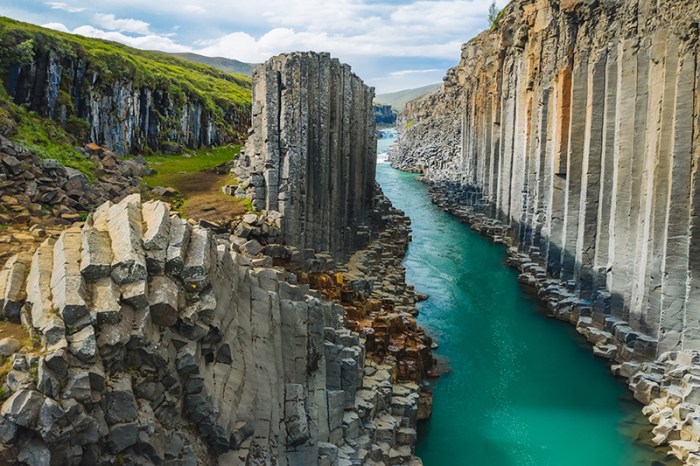
Source: luxurycolumnist.com
Ecotourism, while offering numerous benefits, faces significant hurdles that can hinder its long-term sustainability and impact. These challenges necessitate a multifaceted approach involving collaboration among governments, communities, and businesses to ensure the responsible and equitable development of ecotourism destinations.
Infrastructure Limitations
Ecotourism often thrives in remote or less developed areas. This inherent characteristic frequently leads to inadequate infrastructure, posing a significant obstacle. Limited access to transportation, lodging, and basic amenities can restrict visitor numbers and quality of experience, potentially limiting revenue generation. Furthermore, inadequate waste management and sanitation systems can negatively affect the local environment and visitor experience. The development of appropriate infrastructure is crucial for balancing the needs of tourists with the preservation of the local ecosystem and community well-being.
Lack of Awareness and Capacity Building
A crucial challenge involves raising awareness among both local communities and tourists about the importance of responsible ecotourism practices. Insufficient understanding of environmental conservation, cultural sensitivity, and sustainable tourism can lead to negative impacts on the environment and local communities. Likewise, a lack of training and capacity building for local guides, businesses, and community members in areas like environmental education, cultural preservation, and ecotourism management can impede the development of sustainable tourism initiatives.
Economic Disparities and Equitable Benefit Sharing
Ecotourism, when not managed effectively, can exacerbate existing economic disparities. If not properly implemented, it may fail to deliver significant benefits to local communities. This can manifest in the form of limited employment opportunities, unequal distribution of profits, and a lack of involvement of local communities in decision-making processes related to ecotourism ventures. Strategies for addressing economic disparities must prioritize the equitable distribution of benefits and empower local communities to participate in and benefit from the tourism industry.
Mitigation Strategies and Collaborative Actions
Overcoming these challenges requires a collaborative approach. Governments can play a key role in developing supportive policies and regulations that promote sustainable tourism practices. Communities must actively participate in the planning and management of ecotourism initiatives to ensure that their interests are represented and that benefits are equitably shared. Businesses involved in ecotourism need to adopt sustainable practices, prioritize local engagement, and support community development.
Table: Ecotourism Challenges and Strategies
| Challenge | Strategy |
|---|---|
| Limited Infrastructure | Invest in developing sustainable transportation networks, eco-friendly accommodations, and waste management systems. Partner with local communities to design infrastructure that complements their cultural and environmental needs. |
| Lack of Awareness | Implement educational programs for both tourists and local communities regarding responsible ecotourism practices. Develop culturally sensitive tourism materials and training programs for local guides and businesses. |
| Economic Disparities | Establish fair and transparent systems for distributing profits and employment opportunities among local communities. Support local businesses and craft initiatives to generate economic activity within the community, rather than solely relying on external entities. |
Future of Ecotourism
Ecotourism, a rapidly growing sector, faces a future shaped by evolving consumer demands and environmental concerns. Adapting to these shifts will be crucial for its long-term success and sustainability. This section examines the key trends and challenges influencing the future of ecotourism, highlighting the importance of embracing emerging technologies and prioritizing sustainable practices.
The future of ecotourism is characterized by a dynamic interplay between technological advancements, environmental changes, and the evolving preferences of travelers. This necessitates a proactive approach to adapting and innovating within the sector to ensure its continued growth and positive impact.
Future Trends and Developments
Ecotourism is poised for significant growth, driven by increasing awareness of environmental issues and a desire for immersive travel experiences. This includes a rise in interest in sustainable and responsible travel options. Emphasis on cultural immersion and supporting local communities is also projected to be a key trend. Furthermore, the desire for personalized and curated experiences will shape future ecotourism offerings.
Emerging Technologies and Their Impact
Emerging technologies are transforming various aspects of ecotourism. Virtual reality (VR) and augmented reality (AR) offer immersive experiences, allowing potential tourists to virtually explore destinations and wildlife before their trip. Data analytics and AI can enhance resource management, optimize operations, and tailor experiences for specific interests. Mobile applications facilitate booking, navigation, and real-time information access, making travel planning and execution more efficient and convenient.
Ecotourism Adaptation to Environmental Changes
Ecotourism must adapt to changing environmental conditions, such as climate change impacts. This requires developing strategies for mitigating environmental risks, supporting biodiversity conservation, and ensuring resilience in the face of ecological challenges. Emphasis on eco-friendly practices, such as reducing carbon footprints, conserving water and energy, and minimizing waste, is critical for long-term sustainability. Ecotourism operators should incorporate climate change adaptation strategies into their planning, from infrastructure development to destination management.
Forecasting Future Growth in Specific Regions
| Region | Projected Growth (2024-2030) | Factors Influencing Growth |
|---|---|---|
| Southeast Asia | 15-20% annually | Increasing awareness of biodiversity, rising affluence in the region, and the development of eco-friendly infrastructure. |
| South America | 10-15% annually | Growing interest in adventure tourism, conservation efforts, and sustainable development initiatives. |
| Africa | 12-18% annually | Emphasis on wildlife viewing and cultural experiences, increasing investment in infrastructure, and a focus on community development. |
| North America | 8-12% annually | Growing awareness of environmental issues, demand for nature-based experiences, and existing infrastructure. |
Note: Projections are based on current trends and are subject to change.
Greater Emphasis on Sustainable Practices
Sustainable practices are paramount to the future of ecotourism. These include minimizing environmental impact, supporting local communities, and ensuring fair labor practices. Implementing sustainable tourism principles across all aspects of operations is vital to preserving natural resources, cultural heritage, and promoting economic well-being in the destinations. Examples include responsible waste management, reducing water consumption, and ensuring that tourism revenue benefits local communities.
“Sustainable ecotourism prioritizes the well-being of both the environment and the local communities.”
Final Wrap-Up
In conclusion, ecotourism offers a compelling pathway to responsible travel, balancing personal enjoyment with environmental protection and community enrichment. Its success hinges on a combination of mindful practices, community engagement, and a shared commitment to sustainability. The future of ecotourism rests on the collective understanding and implementation of these principles.


